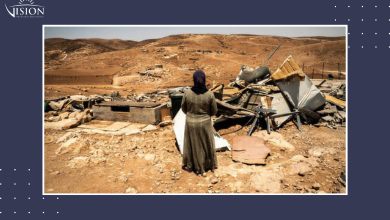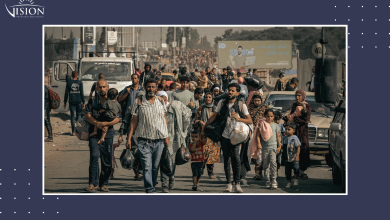Analysis: the Israeli Opposition to the Deal with Hamas

Experts
There are noteworthy “Israeli” stances that publicly oppose the negotiations of a prisoner exchange deal with Hamas. These positions become particularly significant as the negotiations approach a decisive point, presenting a stark contrast to the overwhelming majority of “Israeli” public opinion. Such stances are worth careful study and consideration, as they demonstrate an exceptional “boldness” in refusing the return of soldiers from the captivity of the resistance, under various claims and differing pretexts.
The importance of discussing these opposing views increases when they come from influential ministers within the government, who have interests with broad segments of the “Israeli” public. It is assumed that these ministers would also have party political considerations, in addition to “principled” positions that ostensibly compel them to exert every effort to retrieve “the sons” from “the hands of the enemies,” as per the “Israeli” terminology. Furthermore, this opposition is prevalent among leading public opinion influencers, including journalists and daily columnists, who command a large audience of readers and followers.
Opposition to the Deal and Its Justifications:
Numerous official and media “Israeli” positions firmly reject the prospect of a prisoner exchange deal with Hamas, notably articulated by the National Security Minister, Itamar Ben-Gvir. He has vehemently criticized the deal, alleging it would bring disaster upon the state and expressing significant discomfort at its discussion. He emphasizes that the state would be repeating a grave error, similar to the one made in the “Shalit Deal,” which he claims brought about self-inflicted problems.
Finance Minister Bezalel Smotrich has called for the dissolution of the government should it agree to reach a deal with Hamas. He argues that such an agreement would allow Hamas to repeatedly strengthen its forces and commit acts against “Israelis” at a scale unseen since the Holocaust. He describes approving the deal as a humiliating surrender, equating it to conceding victory to “the Nazis” at the expense of the hundreds of soldiers who fell in battle, posing a direct existential threat to the state. Should the government decide to surrender by raising the white flag, he contends, it would no longer have a right to exist. Meanwhile, Settlement Minister Orit Struck has labeled the proposed exchange deal as “terrible,” claiming that a government willing to sacrifice everything to recover 22 Israeli captives does not deserve to continue, as it is effectively discarding everything into the waste bin.
Some of Israel’s leading military analysts have not hesitated to state that surrendering to Hamas now would make every “Israeli” a potential hostage. They argue that concluding a deal involving a ceasefire before dismantling Hamas’s military infrastructure and neutralizing its leadership would result in a complete security loss for Israel. Travel abroad would become impossible, and even taking a vacation in the north would be risky, as the next massacre could be imminent.
Opponents Marketing Their Case Against the Hamas Prisoner Exchange Deal:
The detractors of sealing a prisoner exchange agreement with Hamas furnish several justifications, the most significant of which are:
- Exorbitant Cost to the State: Opponents argue that the price the state would pay could jeopardize its strategic goals, despite the deal potentially resolving the suffering of the families of captive soldiers and providing them some relief.
- Empowering the Adversary: The natural outcome of repeating such deals with armed groups is the strengthening of their positions and the growth of their popularity and mass support.
- Positioning the Enemy as the Greater Beneficiary: Signing a prisoner exchange agreement with Hamas would mean positioning Israel’s enemies—who capture its soldiers and settlers—as the greater winners.
- Compromising Israel’s Negotiating Stance: These deals could signify Israel’s readiness to concede all its conditions and submit to all demands articulated by Hamas.
- Weakening Israel’s Deterrent Power: Such agreements not only diminish Israel’s deterrent capacity but also encourage organizations to undertake further operations, risking the lives of soldiers who might subsequently be captured.
- Political Translation of the Deals: These exchanges can be politically interpreted as a submission to the demands of the resistance, potentially increasing the price demanded for future exchanges, weakening the occupation’s deterrent force, encouraging further kidnapping operations, and risking the lives of soldiers who may be captured by any other organization.
- Strategic Gains for Resistance Movements: Resistance movements are expected to achieve long-term strategic outcomes following a successful deal, as it would likely enhance their influence and potentially pave the way for them to extend their control over Palestinian territories entirely in the future.
- Political Milestones for the Resistance: The release of dozens of prisoners through the deal would see them returning to their old-new paths, establishing zones of influence, and playing a significant role in shifting the power dynamics within the Palestinian national movement. This presents a severe dilemma for the occupation in responding to Hamas’s demands, as it would be compelled to release prisoners “with blood on their hands,” which is perhaps one of the most compelling reasons driving the opposition against the deal.
- 4. Position of Security Agency Leaders: The views of these leaders are incredibly decisive, although they do not present a unified stance on prisoner issues and exchange deals. Their influence varies depending on the period and the specific circumstances of the deal. The position is significantly shaped by the Shin Bet (Internal Security Service), despite the Mossad currently leading the negotiations. Since the released prisoners would return to Palestinian territories—a region under Shin Bet’s jurisdiction responsible for countering resistance movements—their stance is of utmost importance. Traditionally, there is a tendency to oppose deals because they contribute to reshaping Palestinian perceptions of an “Israel that capitulates.”
At first glance, it may seem natural for Israel to sacrifice much to retrieve its soldiers and citizens, touted as a substantial humanitarian value. However, as per Israeli security and intelligence circles, this could be politically translated as succumbing to the demands of militants who may increase the price required for future prisoner exchanges.
Israeli Motivations for Negotiating a Prisoner Exchange:
The justifications mentioned above clash with the Israeli narrative driven by several factors influencing the decision on prisoner exchanges, which include:
1. Strategic Dimension: The Israeli elite is adamant about ensuring no soldier remains captive. This policy is not merely rhetorical but reflects a strategic understanding of the importance of retrieving them. Soldiers embarking on military operations know that their state will endeavor to bring them back under any circumstances. This assurance significantly boosts their motivation to join combat and elite units, often questioning their leaders about the extent to which the state would go to secure their return.
2. Public Opinion: Public sentiment is a crucial criterion considered by Israeli decision-makers. This is not solely due to the democratic nature of the political system, which values public opinion, but also because families are aware that the government will act to return their captured relatives. Additionally, maintaining public reassurance is fundamental in perpetuating the perception of the Israeli military as “the people’s army.” Here, the media plays a critical role in shaping decision-making concerning captives.
3. Historical Precedents: Historical instances have significantly influenced Israel’s stance on exchange deals. The case of Ron Arad, a pilot held in Lebanon since the mid-1980s, is frequently cited as a rationale for enthusiasm about current negotiations with Hamas. There was a tangible possibility of his release if Israel had acceded to the demands of the Amal movement. The potential for a repeat of Arad’s fate recently highlighted by the Al-Qassam Brigades underscores the importance and distinctiveness of this concern.
4. Strength or Weakness of Leaders: It is notable that the three major exchange deals—the Ahmad Jibril deal in 1985 with the Popular Front for the Liberation of Palestine-General Command, the Elhanan Tannenbaum deal in 2002 with Hezbollah, and the Gilad Shalit deal in 2011 with Hamas—occurred under strong prime ministers, namely Menachem Begin and Ariel Sharon, respectively. The current Prime Minister, Benjamin Netanyahu, who brokered the Shalit deal, is expected to sign a new deal with Hamas in 2024. This pattern suggests that the resolve and strength of leadership significantly impact the decision to engage in high-stakes negotiations.
The Dilemma of the Deal and the Elimination of Captors:
Israeli opponents of the prisoner exchange deal with Hamas believe that prioritizing the return of hostages should not obscure another equally important goal: the need to dismantle Hamas’s military infrastructure and prevent its leadership from continuing to govern the Gaza Strip. If this does not occur, the deal will be perceived as an Israeli surrender to Hamas’s extortion. Furthermore, the expected scale of the deal and the large number of prisoners to be released on both sides provide its opponents with an opportunity to argue that it will not just be another “bad” deal that results in the release of numerous Palestinian prisoners, but rather a complete sacrifice of Israeli security. This would have strategic implications if Hamas secures an agreement allowing the army to withdraw from the sector while its top leaders remain. This scenario posits all Israelis as potential targets for future kidnappings, as the state would be forced to abandon its vital political and security interests for their recovery, thereafter preventing any of its citizens from traveling abroad without fear, particularly young people traveling to third-world countries, who would face difficulties feeling secure.
The Israeli desire to recover hostages from Hamas is matched by a fear that concluding the deal without completely neutralizing the movement’s capabilities means that the events of October 7, 2023, could reoccur on a broader and more dangerous scale in a few years. Simultaneously, Israel would lose its deterrence capability against other regional adversaries, and its settlers would not be able to live with a reasonable level of security, not just in the coming years but also in the distant future, according to Israeli assessments.
The Israeli attempt to link the dual objectives – the retreiving of hostages and the continued targeting of Hamas – is hampered by the Israeli public and media’s lack of patience and resilience. Furthermore, the diminishing unconditional support from the United States for the occupation, coupled with an increase in its intervention in the details of Israeli aggression, all provide Hamas with more primary pressure tools. These include increasing the suffering of the captives and the fear for their lives among the Israeli public and politicians, which results in global public pressure on Israel to stop the fighting without achieving its goals, intensifying the exhaustion of a “depressed and divided” public, and encouraging Hamas to pin more of its hopes.





